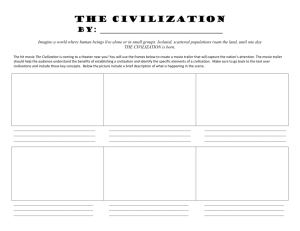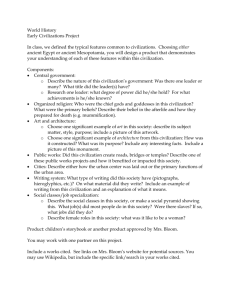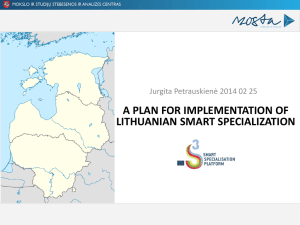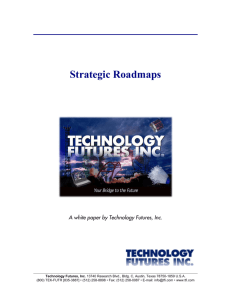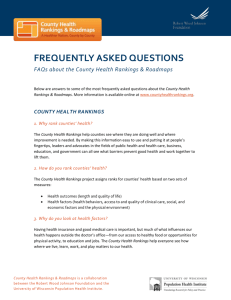Prof J Owen Lewis Video transcript (size 17.6 KB)
advertisement
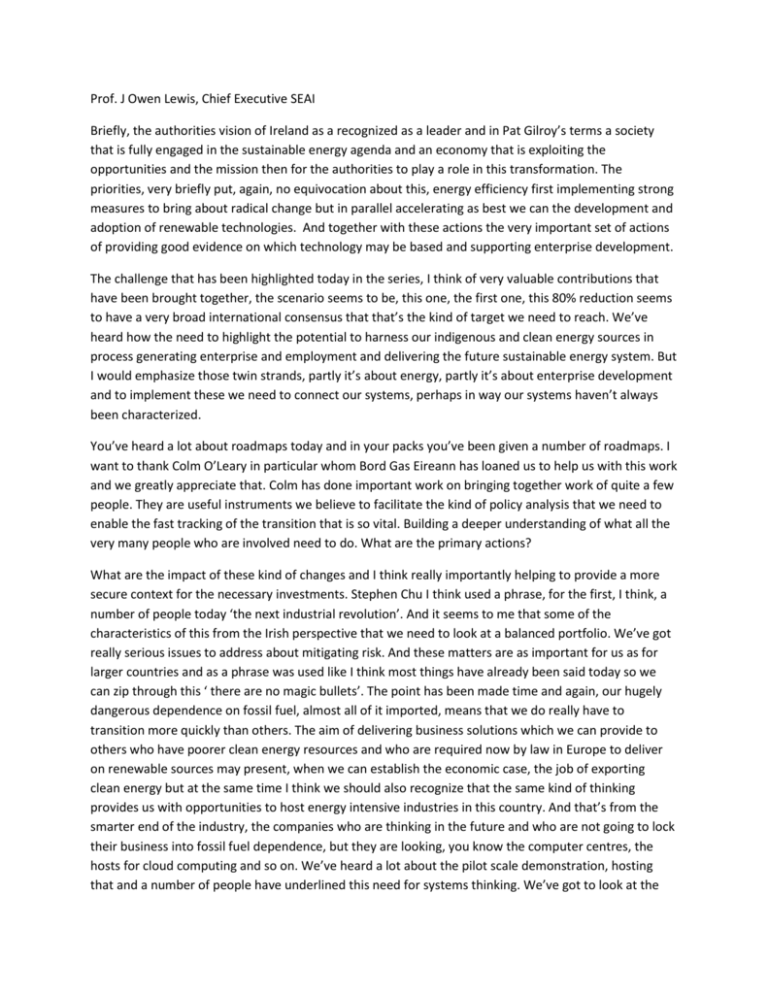
Prof. J Owen Lewis, Chief Executive SEAI Briefly, the authorities vision of Ireland as a recognized as a leader and in Pat Gilroy’s terms a society that is fully engaged in the sustainable energy agenda and an economy that is exploiting the opportunities and the mission then for the authorities to play a role in this transformation. The priorities, very briefly put, again, no equivocation about this, energy efficiency first implementing strong measures to bring about radical change but in parallel accelerating as best we can the development and adoption of renewable technologies. And together with these actions the very important set of actions of providing good evidence on which technology may be based and supporting enterprise development. The challenge that has been highlighted today in the series, I think of very valuable contributions that have been brought together, the scenario seems to be, this one, the first one, this 80% reduction seems to have a very broad international consensus that that’s the kind of target we need to reach. We’ve heard how the need to highlight the potential to harness our indigenous and clean energy sources in process generating enterprise and employment and delivering the future sustainable energy system. But I would emphasize those twin strands, partly it’s about energy, partly it’s about enterprise development and to implement these we need to connect our systems, perhaps in way our systems haven’t always been characterized. You’ve heard a lot about roadmaps today and in your packs you’ve been given a number of roadmaps. I want to thank Colm O’Leary in particular whom Bord Gas Eireann has loaned us to help us with this work and we greatly appreciate that. Colm has done important work on bringing together work of quite a few people. They are useful instruments we believe to facilitate the kind of policy analysis that we need to enable the fast tracking of the transition that is so vital. Building a deeper understanding of what all the very many people who are involved need to do. What are the primary actions? What are the impact of these kind of changes and I think really importantly helping to provide a more secure context for the necessary investments. Stephen Chu I think used a phrase, for the first, I think, a number of people today ‘the next industrial revolution’. And it seems to me that some of the characteristics of this from the Irish perspective that we need to look at a balanced portfolio. We’ve got really serious issues to address about mitigating risk. And these matters are as important for us as for larger countries and as a phrase was used like I think most things have already been said today so we can zip through this ‘ there are no magic bullets’. The point has been made time and again, our hugely dangerous dependence on fossil fuel, almost all of it imported, means that we do really have to transition more quickly than others. The aim of delivering business solutions which we can provide to others who have poorer clean energy resources and who are required now by law in Europe to deliver on renewable sources may present, when we can establish the economic case, the job of exporting clean energy but at the same time I think we should also recognize that the same kind of thinking provides us with opportunities to host energy intensive industries in this country. And that’s from the smarter end of the industry, the companies who are thinking in the future and who are not going to lock their business into fossil fuel dependence, but they are looking, you know the computer centres, the hosts for cloud computing and so on. We’ve heard a lot about the pilot scale demonstration, hosting that and a number of people have underlined this need for systems thinking. We’ve got to look at the social economic as well as the technical issues and that little image I flashed up a moment ago, you heard Brian Hurley speak a moment ago and Brian and John Cash and myself and a few others, 35 years ago published a report through the Solar Energy Society of Ireland which was entitled ‘Towards energy independence, looked at solar thermal, photo voltaic, bio energy, wind, wave and water and put these things together. So when we look at a 40 year timescale, 2050, hey, this kind of thing that was 35 years ago – it’s not all that new. Transforming, the first roadmap looks at the residential building stock in this country. While neither of these are residential we are in a building which was announced as the first carbon neutral convention centre in the world, a new building. Sometimes things are easier to do in new buildings but I also put an image there of the headquarters of the European Energy Council in Brussels which is a historic building, a protected structure and is 100% renewables. So there are huge opportunities and a lot is being done in Ireland at the moment to realize these opportunities. The government has committed significant, very significant monies in these days to retrofitting the building stock in an ambitious program where there are really quite a lot of activities under way. But the focus in the roadmap is to look at what the kinds of opportunities are over the next four decades. And the takeaway message here is that while several scenarios are modelled depending on the intensity of effort, the ambition of effort, the scenario demonstrates, the model brings out that we can reduce our carbon emissions from our building stock over this time scale by 90%. If we look at some things which I suppose are more recognizable in a way, the current average you see, energy is on the top and the lower diagram the carbon, CO2 equivalent emissions and you see by the low, medium or high electricity or high fuel, depending what your ambition is you can see how the energy comes down and how more dramatically the CO2 comes down because of course the high, the ambitious scenario implements a lot of renewable technologies in dwellings. And again, putting it in terms that we recognize in the building energy rating where we are looking at an average across the housing stock of something which is around about a D, you can see how the various scenarios deliver an average housing rating which comes down towards a high B or the low A as the characteristic of the building, the energy intensity. The point has been made that electricity meets a rather small part of our energy demand at the moment, less than 1/5th. While we anticipate an intensification of electricity nevertheless I think it’s important to recognize that Ireland has major opportunities in the whole bio energy sphere and a series of strategies have been looked at, a number of scenarios have been modelled aimed at this idea of the back casting, setting a requirement to reduce equivalent CO2 emissions by 2050 by 80% and then where we allocate that across the different sectors. If we look at the available technologies, where the forest material or the agriculture wastes, whether wet or dry, the energy crops, the grass where Bord Gais and the ECC have been doing important work on or the biodegradable municipal solid waste and algae. You see in the model how important the grass one is but it does underline the need for system thinking because of course this is not just about energy policy, it’s also about agricultural policy and the need to bring into the one room those responsible for the policies in this area. The sectors there that I showed on the first of these series, the breakdown across heat, electrical generation and then transport fuel, the transport fuels are of course of particular importance of course because of their, in a way, intractability and you have these in your packs, I am going through these really rather quickly. This one has a rather interesting change in the overall curve reflecting where the model sees a steady increase and not quite saturation but the electrification of transport brings about some changes there. You can see the importance of the various types of fuel and you see how aviation becomes of really considerable importance there although I do note that an electric plane flew this week with fuel cells although I don’t think it was an A380. A lot of these diagrams, I thought maybe I would pause for a moment Chairman, because we have been loading a fair bit of diagrams and I’m conscious that there is a phrase bandied around about needing to protect the planet and I think that is actually quite mistaken because the planet is pretty robust and is going to survive most of what we do but what is vulnerable is our civilizations and last week I happened to be travelling on holidays in Cambodia and it’s really interesting there was a little bit of a link here you see the Ta Prohm temple there, this is an ancient civilization defeated by the Siamese in somewhere in the 12th, 13th century and the forest, the jungle took over there and you see that tree there, the kind of thing that the more familiar maybe is Angkor Wat but this is part of a very large and sophisticated urban civilization, 1 million people there in the city of Angkor Thom in the 12th century lost in jungle then for a half a millennium. Maybe more directly relevant or recognizable, for a while I was teaching in Berkley and was able to travel through the Southwest of the United States and there these magical places of the, I mean in my research area of climate sensitive architecture you find these traditional buildings, I show the palace in Mesa Verde, the Anasazi, a building with great sensitivity to climate and understanding of solar geometry but a civilization which disappeared relatively suddenly around about the 1230 or 40 for reasons that are thought to do with climate change, a civilization more or less ended. Which brings us back to ocean energy and one of the potential great saviours of civilization in this part of the world. The extraordinary resource off our coast has been highlighted earlier today and in this roadmap this really does underline the scale of ambition, you’ll see some of the detail there and the stages we are at, really quite an early stage. But the breadth there is between the scenarios between the baseline growth in the exploitation of this technology or an ambitious growth in this term stating in millions tonnes of oil equivalent, or in this terms putting a value on it with different assumptions the same levels of the two extremes of growth but the difference between the two, the value of a barrel of oil in current terms at 60 euro a barrel or 120 euro a barrel but we could be looking at a resource, and this is again remember a strategic environment assessment which is looking at environmental impacts and so on and this is looking at a scale of development within acceptable environmental limits. Drawing a number of these things together, we’ve heard references again to a smart grid and clearly this gird in this area is going to have to get a lot more smarter a different kind of grid as we talk about a more distributed generation but also as we empower consumers to make smarter decisions about how they use and who’s product they use and as we cease to reward utilities for selling kilowatts or whatever and instead reward them for delivering energy services like the kind of issue that has been recently averted to. You have in your packs a document which is relevant to this. I think there is a process, I didn’t talk in the other ones about the various people who have been involved in work which has led to these roadmaps, this process is live and I think it’s interesting to see that the policy focus in terms of the department together with the regulator, the Eirgrid and ESB networks, and the enterprise agencies all collaborating in a process which will early next year result in a roadmap on this. But this is a map of the current work which is underway. A lovely diagram to be one of the last ones I think because it looks at both the networks, the operations, the users, the generation and the pricing, smartness is the common characteristic and work underway in the research sphere, development in demonstration and deployment. This is one of the most exciting areas around, for me it links together a number, remember this is really a quite incomplete picture becuase this is work in progress and our work has been considerably influenced by the IEA in roadmapping and in fact in the smart grid we are working very closely with the IEA who are preparing a roadmap in this area. This publication to which I refer to I think Sarah White said that if we had the energy and the resources and nothing else to do you could probably attend a conference on smart grid, every week Catriona I think? They are on all over the place. One of the things to say about roadmaps is that they don’t self implement they are a vehicle for talking about issues, they are a vehicle for engaging the people who might need to take decisions on these things. So it’s a health warning I think, Chairman. If I can conclude, this message about the need not to think about the future in terms of the past but rather to think of the future in terms of where we want to be. To imaging the future and then in your term, the backcasting. I think in this discussion we need to recognize the paradigm shift I think has occured, you know talk of a consumer society founded on consumption and waste replaced by one where there is concern with conservation and reuse and so on. In my own discipline the idea for instance, which was dominant in the 20th century of an international style of architechture, irregardless of where you were the buildings look the same, that kind of nonsense and all four phasades of the building looked the same as though the environment about the building was symetrical. Moving forward, a focus I think much of it should be on energy systems innovation, systems innovation and I think we had in this country have some particular opportunites there but at the same time as that the focus also on enterprise development. These roadmaps I think help us articulate some of the options give us a basis to consult and engage others and hopefully will lead to connecting some of these systems so that the promise of our opportunities both in efficiency and in renewables can be delivered and this might help us, might help me for instance be able to look my grandchildren in the eye in good conscience and coolectively we might look at the children of the world in good conscience and feel that we might have left the place in a suitable fashion for them. We are very anxious to have your comments and feedback and so on and there is a dedicated mailbox there roadmaps. Chairman, thank you very much indeed.


